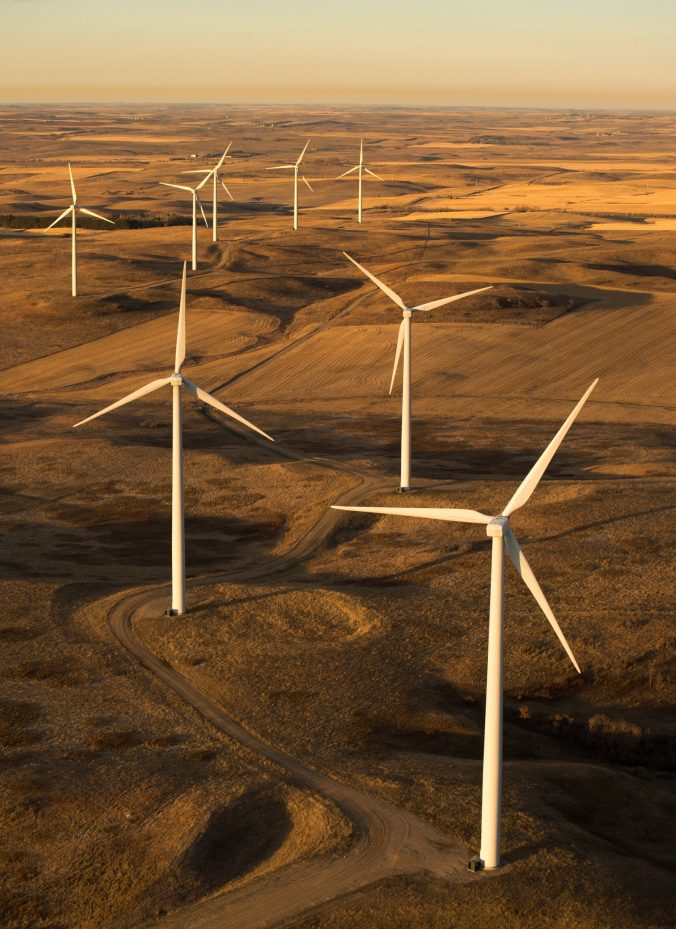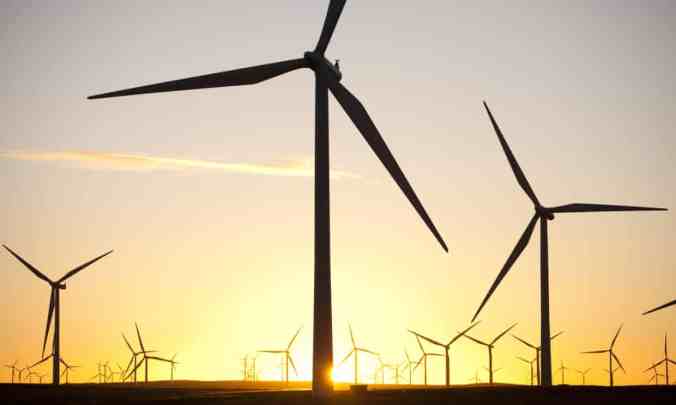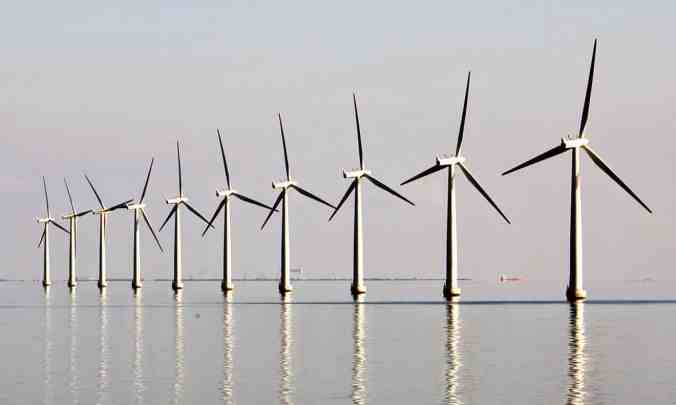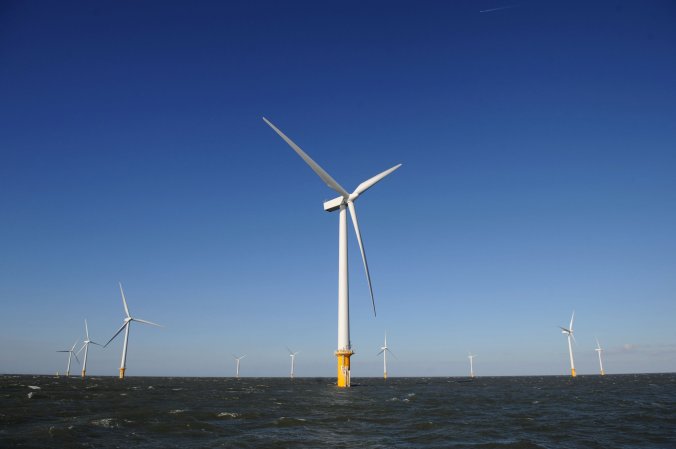
A good method for converting so-called NIMBY opponents of turbines and other renewable-energy infrastructure would be to give locals a stake in the enterprise’s economic success. Photograph by Simon Dawson / Bloomberg / Getty

“No vote for wind power advocates” – wind power opponents’ election poster for the 2017 parliamentary elections. Source: windwahn.com
We have giant turbines along the ridge at the top of the mountain where we live. I enjoy looking at them, not because they are pretty, or perfect, but because they represent progress. I never had the NIMBY inclination. If the turbines were in my face all day, every day, or if I had some sense that they were affecting my property value, perhaps I would feel differently. I had thought of the acronym PIMBY, thanks to those turbines uphill from us, before reading this, but am glad to see it is a thing. Thanks, as always, to Bill McKibben for his newsletter’s role in getting us to see further down the road:
The pandemic has driven a lot of people outdoors: reports show that park visits are up around the world and parking lots at hiking trails are packed. That’s understandable—by now you’d need to chop down a sizable forest to print out the studies showing that time in nature reduces stress, cuts healing times, and enhances the functioning of the immune system. As Sadie Dingfelder wrote in the Washington Post in December, “I’ve always found it relaxing and rejuvenating to be outdoors, but the anxiety and isolation of the pandemic, the uncertainty of civil unrest and, oh, I don’t know, the potential crumbling of American democracy have made me crave nature like a drug.” Continue reading →
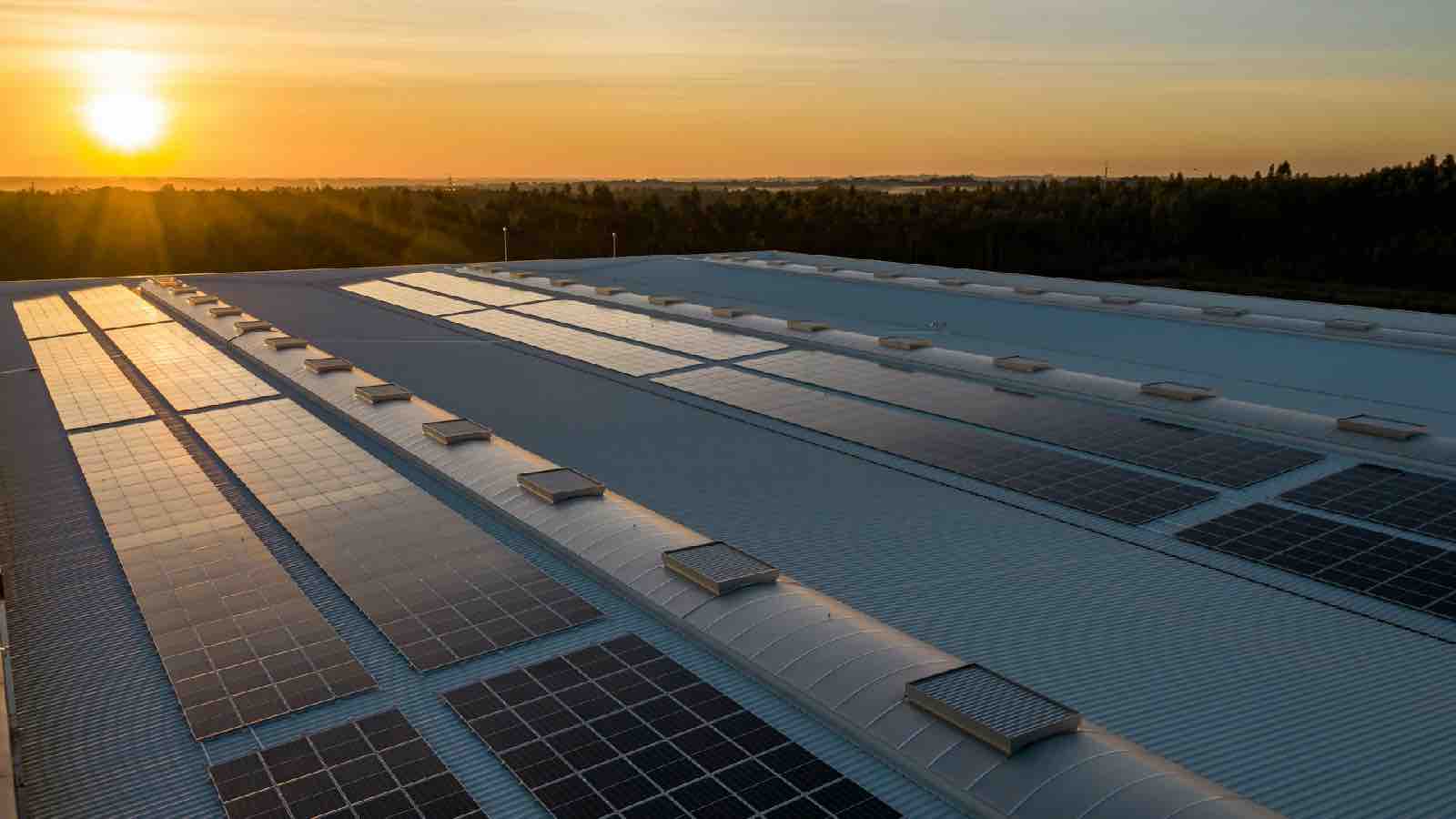 For those who might say too little too late we say this still counts as good news worth reading, so thanks to Yale Climate Connections:
For those who might say too little too late we say this still counts as good news worth reading, so thanks to Yale Climate Connections:
















